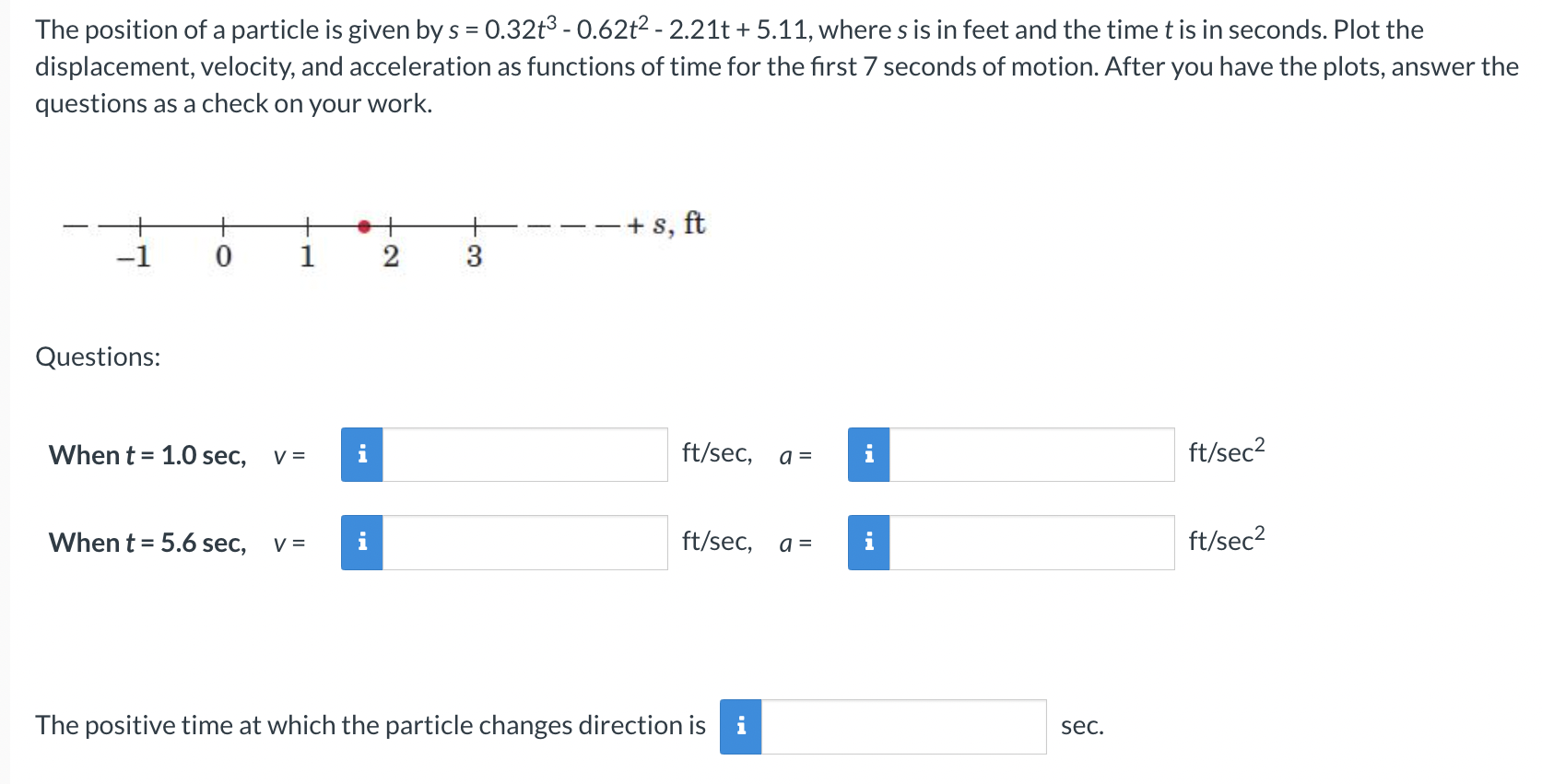The position of a particle is given by s = 0.32t3 − 0.62t2 − 2.21t + 5.11, where s is in feet and the time t is in seconds. Plot the displacement, velocity, and acceleration as functions of time for the first 7 seconds of motion. After you have the plots, answer the questions as a check on your work. Questions: When t = 1.0 sec, v = ft/sec, a = ft/sec2 When t = 5.6 sec, v = ft/sec, a = ft/sec2 The positive time at which the particle changes direction is sec.
